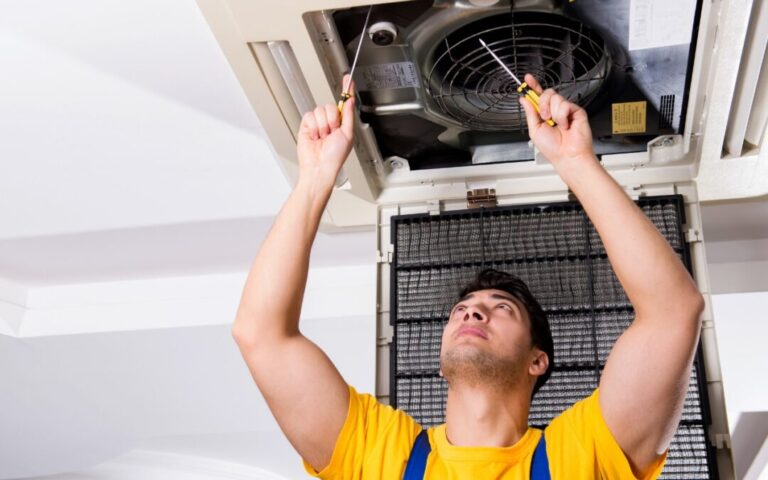The comfort of your home should not be accompanied by a sudden chill in the summer or an unexpected sweat in the winter. There’s more to it than a weather shift when indoor temperatures begin to fluctuate without warning. Variations in temperature, strange noises, or growing energy costs might all point to a system failing under the surface. Staying in control of your surroundings—including your budget—depends on identifying these indicators before things spiral.
Inconsistent Temperatures Between Rooms Point to an Underlying Issue
Something isn’t working behind the scenes when rooms in your house seem quite different from one another—cool and breezy in one location, stuffy and warm in another. These imbalances suggest that, whether from blocked ducts, inadequate insulation, or failing system components, air isn’t being delivered fairly. You shouldn’t have to close vents or use space heaters just to make one room liveable. The standard should be uniform comfort over all areas; anything less calls for attention. An effective system lets every part of the house stay at the temperature you want without noisy operation.
Increasing Utility Bills Reveal More Than Just Seasonal Shifts
Monthly energy usage spikes directly convey a story. It’s time to investigate further if expenses rise even with no adjustments to your thermostat settings or lifestyle. Often running longer than required, systems running poorly cycle frequently to satisfy temperature needs. Without producing any improvements, this extended activity wastes more energy. Contributors to the problem include past-due thermostats, clogged filters, and equipment beyond its prime. Energy use stays constant and predictable when your Toledo heating and cooling system performs at maximum performance. Otherwise, your bills will reflect the increasing inefficiencies in your home.
Strange Noises Signal Internal Strain or Wear
While certain mechanical hums are expected, clanging, slamming, or grinding indicates something malfunctioning in your system. These sounds usually indicate worn bearings, loose components, or blower assembly imbalance. Early indicators of damage are squealing and rattling; ignoring these will let the damage spread from one connected component to another. A properly running system keeps silent efficiency; when noise replaces that tranquillity, your system demands attention. Rather than dismissing unusual sounds as minor quirks, treat them as warning signs before they lead to complete system failure.
Poor Airflow Reduces Both Comfort and System Efficiency
Slow room temperature changes and a stagnant indoor atmosphere are caused by weak vent airflow. Blower fan failures, blocked ductwork, or a clogged air filter are frequently the causes of this problem. Your system runs harder and longer to compensate when ventilation is poor, stressing internal components and cutting the lifetime of the equipment. Good airflow protects your investment in addition to making you comfortable. It also immediately affects indoor air quality by moving filtered, conditioned air all over the house. Strong, regular air movement is essential for both comfort and efficiency; without it, an atmosphere feels slow and stale instead of clean and pleasant.
The Age and Performance History of Your System Hold Clues to Future Reliability
Every system has a lifetime, even with regular maintenance. Performance naturally starts to drop when your unit has been serving you for more than ten years, particularly if repairs become more regular or problems keep resurfacing. Technology changes as well; older systems can lack the efficiency criteria needed to meet the energy-conscious requirements of today. Examining historical service records, repair frequency, and replacement part availability will help one determine whether ongoing maintenance makes sense or if it is time to investigate other possibilities.
Your system’s capacity to keep consistent heating and cooling reduces greatly when it ages past its prime years, therefore increasing the likelihood of an unexpected breakdown and discomfort. Safety becomes a factor with aged equipment beyond cost, comfort, and efficiency since older components are more likely to fail. Changing an antiquated system is proactive toward peace of mind, long-term savings, and consistent performance across the seasons—not only an improvement.
Conclusion
The signs of inefficient climate control are often subtle—an unusual noise here, a warm spot there. They develop over time into patterns that tell volumes about the capacity of your system to maintain the comfort of your house and reduce your energy use. Early identification of these warning flags can help you act before the suffering or expense becomes intolerable. Stay ahead by paying attention to your system’s performance and recognizing what it is trying to tell you. Comfort should never be a compromise—and, with the right attention, it never has to be.

